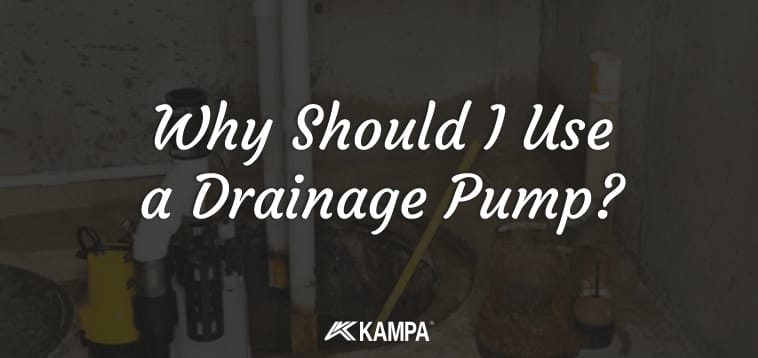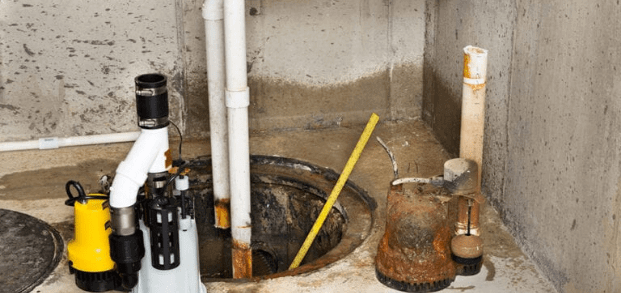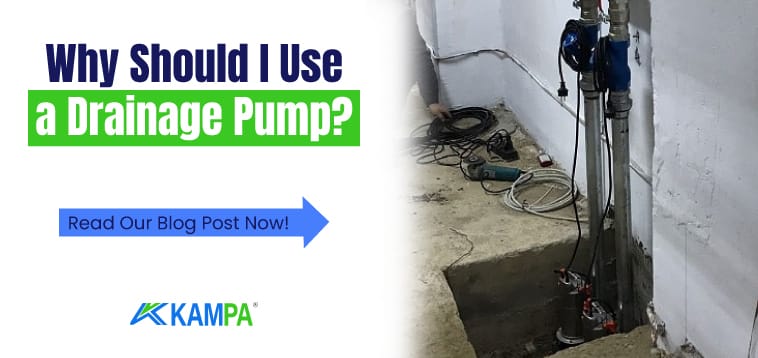Why Should I Use a Drainage Pump?
If the basement has a moisture problem, you probably need to use a drainage pump. Wet, moldy, accumulated water and discoloration on the floor clearly indicate your need.
Table of Contents
Damp soil, especially with spring and autumn rains, can cause water to soak through the floor of your home. If you ignore this problem, the foundation of your house will start to rot. The rotting house will also cause mold and mildew, which will increase your health problems.

Drainage Pumps Protect the Basement from Water Damage
Water problems in basements and apartment spaces can be easily and quickly eliminated with a drainage submersible pump. The drainage type pump is installed at the lowest point of the basement. Water flows downhill and accumulates in the area where the pump is located. It is activated when the water reaches a certain level.
It starts to drain the accumulated water. A well-installed and properly functioning submersible drainage pump can transport large quantities of water. Therefore, even in the worst rainstorms, it will not leave you stranded.
- How many meters deep will the pump be installed,
- How many meters of water will be thrown,
- Is the water clean or dirty,
- How many tons of water will be pumped per hour?
Appropriate pump preference should be made with answers to certain questions such as.
If you are facing the threat of flooding, you can take precautions by reading our article“How to Protect Basements from Flooding“.
Click here to buy a drainage pump.
Where are Drainage Pumps Used?
- In clean wastewater; for drainage of water accumulated due to rain, leakage, etc,
- Draining of pools, tanks and tanks,
- It is used for irrigation of vineyards, gardens and orchards.

Features of Drainage Submersible Pumps
They can be produced in different specifications according to their intended use such as discharge height, immersion depth, pollution and temperature of the transferred liquid.
It may also vary according to the brand and model. General features are as follows.
- They can suction between 7 meters and 9 meters.
- Single-phase or three-phase models are available.
- They are available with and without a floater.
Drainage Submersible Pump Failures

Periodic maintenance of submersible drainage pumps is important to minimize possible failures. These maintenance should be performed at least once a year by the relevant technicians.
If you have a submersible drainage pump that has not been periodically maintained, you may have encountered the following drainage pump failures.
- Always disconnect the power for maintenance and repair.
- Clean the suction part of the pump periodically. The material collected in this part causes the pump to become inefficient or malfunction over time.
- In case of malfunctions, contact authorized technicians only
- Cleaning and user maintenance must not be carried out by unsupervised children.
| Failure | Reason | Solution |
| Engine does not start | No electricity, impeller blocked, electrical connection fault. | Check that there is electricity on the line. Check that the electrical connection is correct. Remove and clean the impeller. Contact a technician. |
| Engine running but not pumping water | Blocked bottom flap, Excessive suction height, Air during suction. | Clean it. Bring the pump close to the static level of the water. Check that the suction pipe is free of air. Readjust the pump. |
| Insufficient degree of flow | The flapper is partially blocked, the propeller is partially blocked. | Clean the flapper and if necessary the entire suction pipe Remove the pump from the casing and clean it. |
| Overload breaker tripping. | The engine’s overheating, the impeller’s clogged. | Check the voltage. Clean the propeller. |
In this article, I tried to enlighten you about general issues such as drainage pumps, drainage pump types, drainage pump failures, drainage pump usage areas. I hope it was useful. You can send us your experiences and suggestions by commenting.

